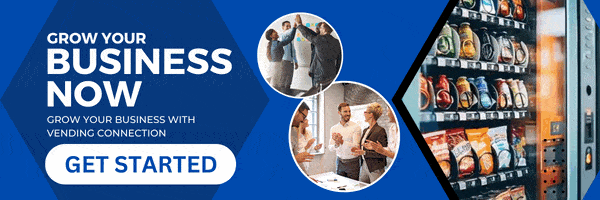How Next Generation Technology Challenges Convenience Services: NAMA Panel Offers Insights
Deciding what technologies to invest in poses some of the hardest choices for convenience services operators nowadays, given technology’s rapid advancements. Complicating the challenge is the fact that customers, as well as convenience service employees, have different levels of comfort with new technology.
 A panel at the National Automatic Merchandising Association show at the Las Vegas Convention Center gave attendees a chance to share insights on how convenience service operators can best address the dual challenges of deciding what technology to invest in and educating customers and employees about new technology.
A panel at the National Automatic Merchandising Association show at the Las Vegas Convention Center gave attendees a chance to share insights on how convenience service operators can best address the dual challenges of deciding what technology to invest in and educating customers and employees about new technology.
One point everyone agreed on is that technology has changed rapidly in recent years. Panel moderator Amanda Sulc, director of category insights and strategy at Accent Food Services in Pfulgerville, Texas, noted that PCs became mainstream 20 years ago, giving rise to the Internet and instant messaging. Five years after PCs became mainstream, Wi-Fi networks emerged and smartphones were introduced.
One of the most obvious impacts on convenience services has been the replacement of route handheld computers with smartphones, a trend that’s expected to continue.
But new technology is also changing customer buying habits, presenting a host of challenges for convenience services.
Panelist Brian Fischer, national sales director at USA Technologies Inc., said differences in consumer adoption of new technology such as smart phones continue to be significant. He said it is important, therefore, for a convenience service operator to make sure customers don’t feel overwhelmed with new technology in the work place.
Several attendees mentioned the importance of going to industry conferences and taking advantage of technology provider training.
“An investment in technology isn’t enough,” agreed panelist William Kopalsky, product manager of 365 Retail Markets. “You have to put it to work.”
Team buy-in is also needed, added panelist Juan Jorquera, founder and CRO of Vagabond Vending LLC.
When considering a technology investment, Five Star Food Service, a refreshment services provider, always involves operations in the decision, observed C.J. Recher, director of marketing for the Chattanooga, Tenn. based company. Doing this not only helps the company make the right decision; it also motivates the operations employees to instruct their own teams how to use the new technology.
If there is employee reluctance to embrace a new technology, Jorquera volunteered that it helps to identify a technology “champion” among the team who can motivate fellow employees.
“Change is really scary,” observed Paul Woody, director of operations at Gimme Vending LLC, agreeing on the importance of identifying a technology champion among the company’s employees. He also suggested having a plan to introduce a new technology to employees.
As convenience services offer new features such as biometric identification, customers need to be educated about the benefits. It isn’t unusual for a customer to be hesitant about allowing a vending machine to take their fingerprints, Sulc said, but the technology can save time, which translates into a financial savings for the location.
Offering a downloadable mobile app to make payments can also give access to product promotions, she said.
“There are a lot of features and benefits when you download the mobile app,” said Sulc, whose company operates micro markets that accept mobile payments.
Despite all of the technological change, convenience services continue to offer businesses a unique value: keeping employees at the work site during lunch time, Sulc noted. She said it takes an employee as long as 40 minutes to go to lunch if they leave the work place.
Convenience services not only improve employee productivity for businesses, Sulc said. By saving the employee time while they’re at work, convenience services give them more time with their families.
The benefits of convenience services are oftentimes viewed as intangible, but in reality, the benefits are real. Sulc said it is important to communicate this to customers.
Recher said loyalty rewards are also an important benefit for consumers. Hence, a convenience service provider that can offer loyalty rewards will be offering a value that can be a competitive advantage.
Having the right products in the vending machine or the micro market also remains an important advantage, noted Kopalsky.
Engaging the customer at the worksite remains a key factor in educating customers about technology, Jorquera noted.
“If you’re doing that,you’re more likely to succeed with what you’re rolling out,” he said.
By Jeff Adair
![]() Vending Technology News | More News | Vending Newsletter sign up | Questions? Contact us | email press release
Vending Technology News | More News | Vending Newsletter sign up | Questions? Contact us | email press release
Also see: Software Companies | Technology Companies | Micro Markets | Cashless Vending | Distributors | Classified Ads | Home |
VENDING YELLOW PAGES DIRECTORIES:
Call us at 1-800-956-8363, POST YOUR COMPANY




